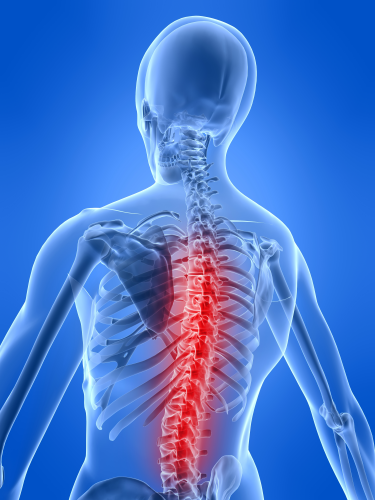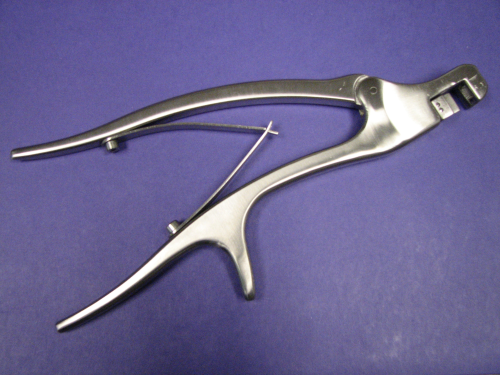

Surgery on the human spine is one of the most exacting, delicate procedures in the operating room. While the skill of the doctor is of paramount importance to a good outcome, the precision and reliability of the instruments they use are also critical. As minimally invasive surgery (MIS) becomes one of the fastest-growing areas in spine treatment, orthopaedic surgeons are demanding increasingly sophisticated tools. These must be sized for greater access and control through smaller incisions, made strong enough to cut through cartilage and bone, and built from materials that are biocompatible.
DePuy Spine, a division of DePuy Inc, is one of the world’s leading designers, manufacturers and suppliers of orthopaedic and neurosurgical devices and supplies. The company has worked and partnered with clinicians and researchers for more than twenty years to improve the knowledge of both professionals and patients in addressing spinal pathologies and developing products to treat spine disorders.
However, getting the right instruments to a surgeon who needs them – and coming up with new or customized models as techniques advance and materials evolve – can be an arduous process. Prototyping, revisions, materials selection, cadaver testing and manufacturing can take many months. DePuy Spine is cutting those lead times dramatically by employing laser-sintering technology.
Laser sintering solution
The DePuy Spine development team starts with a basic design idea, often making a plastic prototype first (on a different machine in their shop), then offers a preview to the surgeons for feedback. After modifying the design according to the doctors’ input, DePuy Spine may turn to EOS’s EOSINT M 270 DMLS machine – providing the application is appropriate for creating a metal prototype. The DMLS process starts with a CAD file of the product design, which defines each thin layer of a horizontal cross-sectioned model that is generated onto the work platform inside the machine. In this manner, extremely complex geometries are created automatically directly from CAD data in just a few hours.
Laser-sintering is an additive layer manufacturing technology which can enable fast, flexible and cost-effective production of products, patterns or tools directly from electronic data. For example, it can create any shape of tool and can be applied in every phase of the product life cycle: from pre-development to the supply of spare parts. Besides medical, it is suitable for all industries in which complex, high value products are being produced, including aerospace, automotive, lifestyle products and tooling.
The EOSINT M 270 is an additive layer manufacturing system for metal components. It builds high-quality metal parts from 3D CAD data fully automatically, with no need for tools. The system builds parts up layer by layer by melting fine metal powder with a laser, enabling the creation of extremely complex geometries. Parts can be made that wouldn’t be possible with CNC machining, including deep groves and threedimensional cooling channels. The direct DMLS process eliminates toolpath generation and multiple machining processes such as EDM. The process is mainly used for injection moulding, but it can also be used for other tooling types, including blow moulding, extrusion, die casting and sheet metal forming.
The EOSINT M 270 system is equipped with a solid state 200 watt laser. The system operates in a protective nitrogen atmosphere, allowing a range of materials to be used ranging from light alloys via steels to super-alloys and composites. The EOSINT M 270 offers a number of powdered metal materials with corresponding parameter sets and standardized property profiles.
Once the consulting doctors are completely satisfied with an instrument design, DePuy Spine quickly makes a final metal prototype with the EOSINT M 270 and sets up a cadaver section so the surgeons can put the item through its paces. Cadaver testing of metal prototypes is the last stage in product development before DePuy Spine sends the 3D model file for the approved piece to an outside vendor for manufacturing. The finished items undergo a last round of mechanical testing and verification before being used in actual surgeries.
Range of prototypes
DePuy Spine makes more than seventy brand-name products with tens of thousands of product codes that are distributed globally. Using a single DMLS-machine from EOS in their own shop, DePuy Spine was able to process 2,000 prototype parts – benders, extractors, surgical screws, clamps, reduction devices and others – in the first year of use alone.
“The result of introducing laser sintering into our Development Centre has been a paradigm shift in the thought process for designing tools,” said Peter Ostiguy, staff team leader at DePuy Spine. “We’re not designing for manufacturability any more – we’re designing for functionality. As designers, we were constantly thinking about how we were going to make something within process limits. With this machine, it really doesn’t matter.”
The consulting doctors can be very exacting about their requirements for tools such as blades, racks, tweezers, and callipers. “When they review the parts they may ask for different handle angles or different spring strengths,” Ostiguy explains. “It’s very easy to adjust the CAD design and make another iteration of a tool to give our doctors more choice. Laser sintering lets us make virtually anything they ask for. In many instances we used to have to go with just one iteration, but now we have greater flexibility to present more options. There’s just no substitute for actually holding an item in hand.”
What’s more, according to Ostiguy, delivery times for surgical tool prototypes have shrunk from several months to less than a week, in some cases. “Laser sintering is very well-suited to our environment because of all the things we need to produce quickly,” the staff team leader adds. “We’ve really impressed our surgeons with our ability to turn around what they’re looking for in a short amount of time.”
Following their success in product development with DMLS-technology, DePuy Spine has purchased another machine of the same type as EOSINT M 270. “If we can make instruments on our own machine, we can save time and money and be responsive to our doctors’ requirements,” Ostiguy noted. “The possibilities are endless for future product development with laser sintering.”





